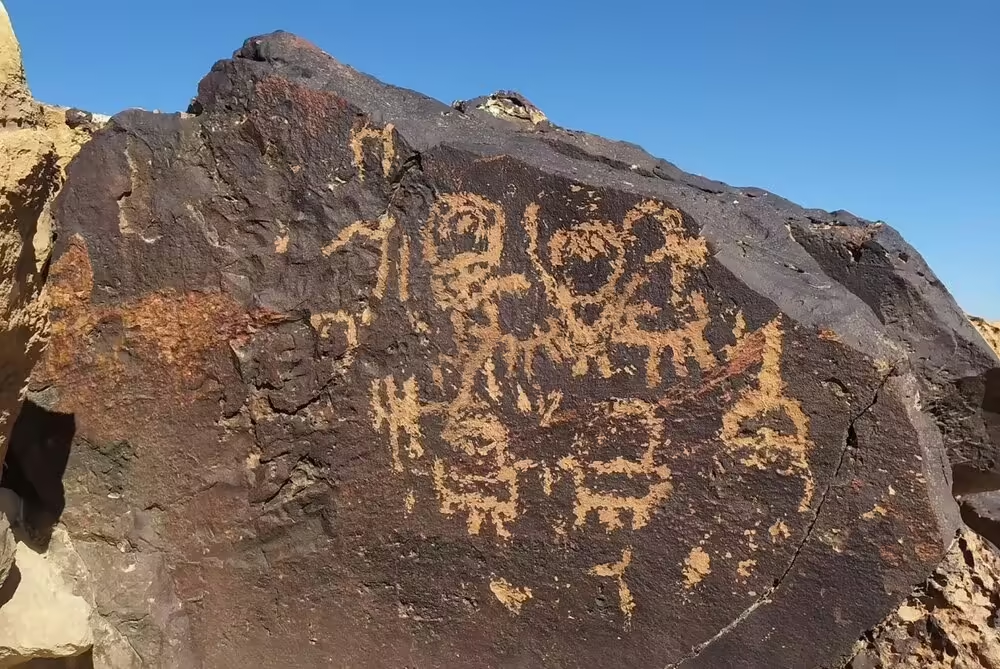Famous ancient rock art in the Negev Desert is in danger of extinction
- July 16, 2024
- 0
The Negev desert in southern Israel is famous for its ancient rock art. Starting at least in the 3rd millennium BC, hunters, shepherds, and traders who roamed the
The Negev desert in southern Israel is famous for its ancient rock art. Starting at least in the 3rd millennium BC, hunters, shepherds, and traders who roamed the

The Negev desert in southern Israel is famous for its ancient rock art. Starting at least in the 3rd millennium BC, hunters, shepherds, and traders who roamed the Negev left thousands of drawings on rocks, known as “petroglyphs.” Many represent animals such as goats, goats, horses, donkeys, and domesticated camels, but some have abstract forms. These petroglyphs are often carved into “desert varnish,” a natural, thin black layer that forms on limestone rock.
A published study Frontiers in Fungal Biology, showed that the petroglyphs host an unusually specialized community of fungi and lichens that, unfortunately, could pose a serious threat to rock art in the long term.
“We show that these fungi and lichens can contribute significantly to the gradual erosion and damage of the petroglyphs,” said Laura Rabbachin, a doctoral student at the Academy of Fine Arts Vienna in Austria and first author of the study.
“They can secrete different types of acids that can dissolve the limestone on which the petroglyphs are carved. Fungi can also penetrate and grow inside the stone grains, causing additional mechanical damage.”
Rabbachin and his colleagues took samples from petroglyphs in the west-central Negev Highlands. It receives an average of just 87 mm (3.4 inches) of precipitation per year, and rock surface temperatures can reach 56.3 °C (133 °F) in the summer months. The researchers scraped samples from the desert polish next to the petroglyphs, rocks without desert polish, and soil near the rock samples. They also left petri dishes open near the rocks to catch airborne spores.
The authors identified the collected fungi and lichens using two complementary methods. First, they repeatedly cultured fungal material or spores from rocks or soil on plates with one of two different growth media until they obtained pure isolates for DNA barcoding. Second, they directly sequenced the DNA of fungal material found in rocks or soil samples without culturing them first. The second method enables the identification of strains that do not grow in culture.
Both methods showed that species diversity and abundance in petroglyph rocks were low compared to the soil, indicating that only a few species could withstand local extremes of drought and temperature.
DNA barcoding of cultured isolates revealed that petroglyphs contained more than one fungal species within the genus Alternaria, Cladosporium And Coniosporiumdirect sequencing also revealed several species within the genus Vermiconidia, Knufia, Phaeotheca And Patrol. All except Alternaria And Cladosporium, are microcolonial fungi known to thrive in hot and cold deserts worldwide. There were also numerous lichens belonging to the genus. Flavoplaça.
“Microcolonial fungi are considered to be very dangerous for stone artefacts. For example, they have been implicated as a possible cause of the degradation of stone cultural heritage in the Mediterranean,” Rabbachin said. “Lichens are also known to cause the degradation of rocks and thus pose a potential threat to stone cultural heritage.”
In the surrounding soil and air, the researchers found a variety of cosmopolitan fungi known to survive in harsh desert conditions, primarily by producing drought-resistant spores.
Can anything be done to protect the petroglyphs from the slow but destructive work of microcolonial fungi and lichens that has been observed? The authors caution that this is unlikely.
“These natural weathering processes cannot be stopped, but the speed of the weathering processes depends largely on whether and how the climate changes in the future. What we can do is to observe the microbial communities over time and, most importantly, to document these valuable works of art in detail,” said Rabbachin’s advisor, Professor Katja Sterflinger, senior author of the study.
Source: Port Altele
As an experienced journalist and author, Mary has been reporting on the latest news and trends for over 5 years. With a passion for uncovering the stories behind the headlines, Mary has earned a reputation as a trusted voice in the world of journalism. Her writing style is insightful, engaging and thought-provoking, as she takes a deep dive into the most pressing issues of our time.